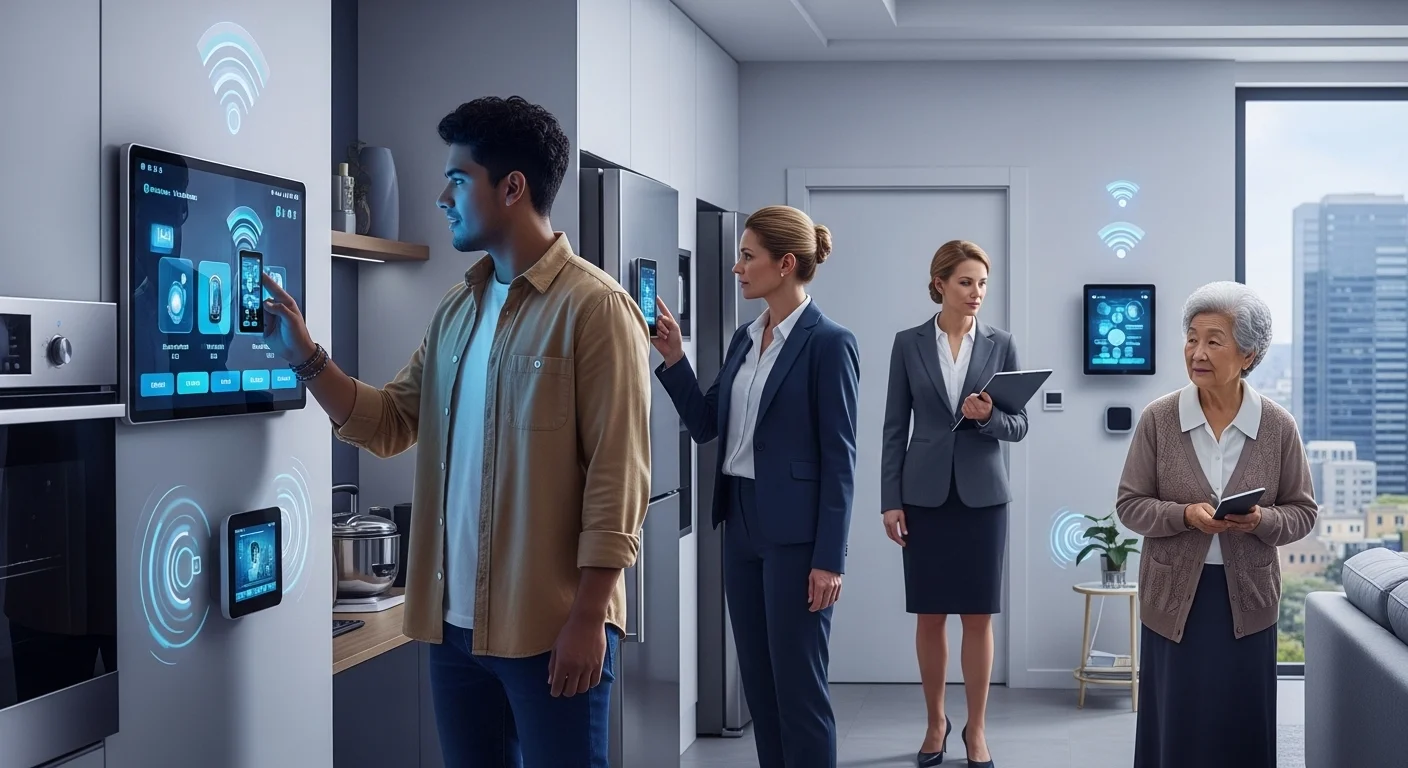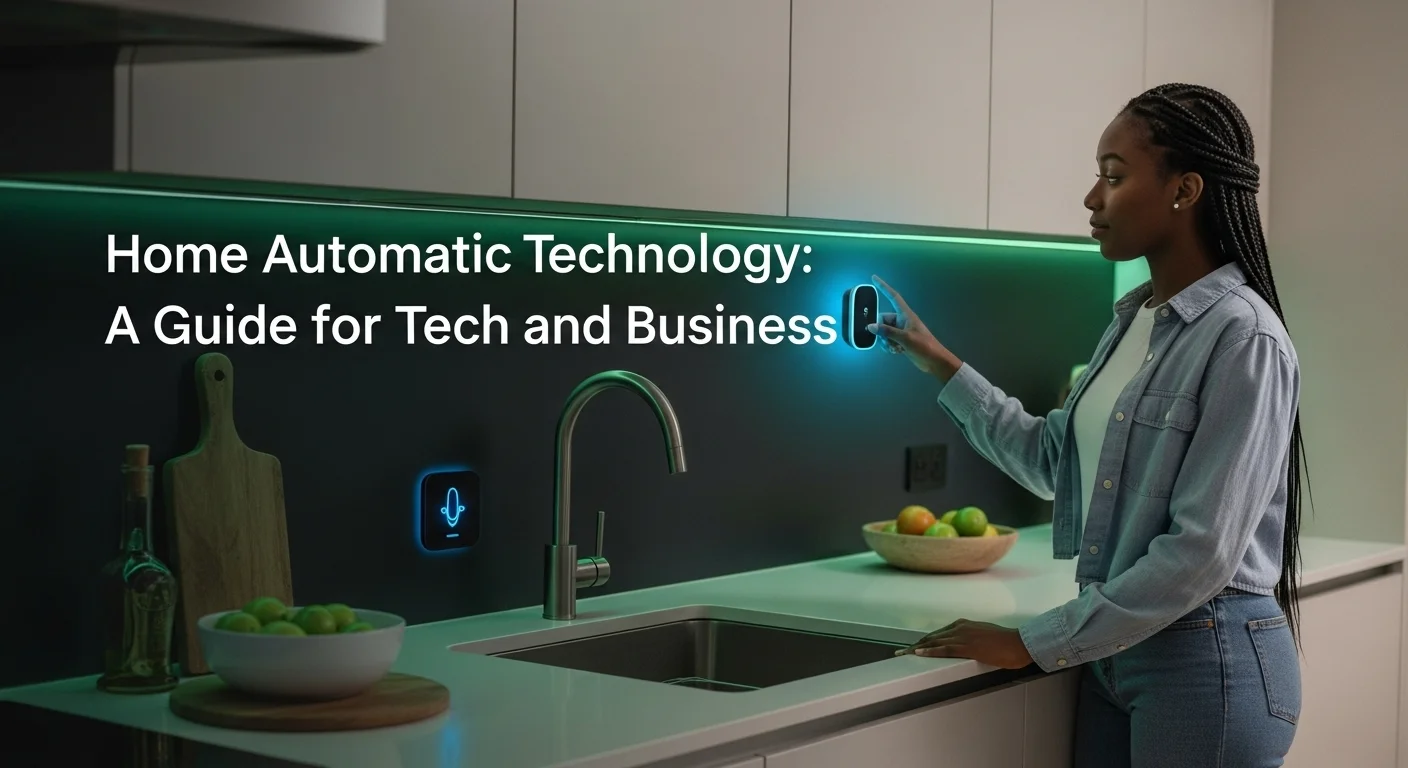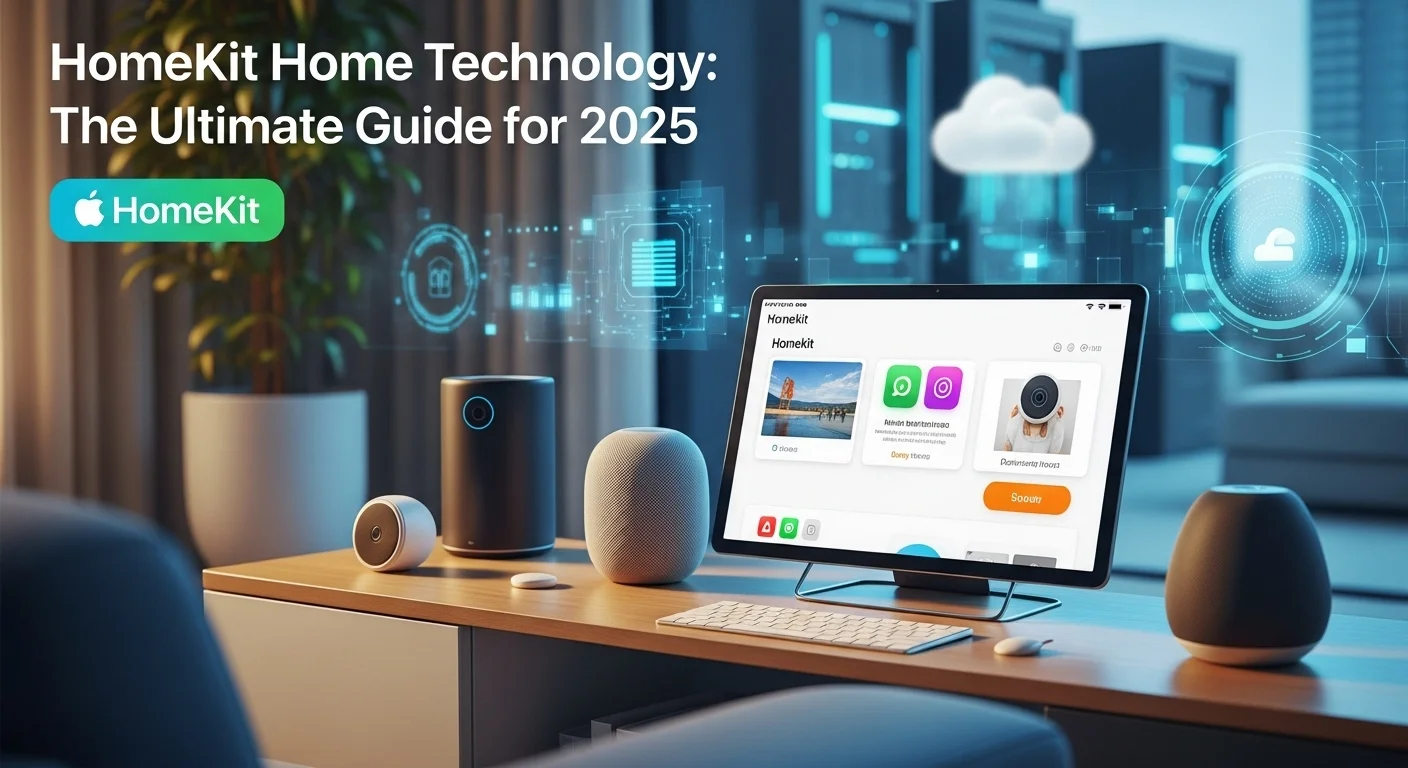Smart Home Automation: A Practical Guide for Modern Living and Business

Executive Summary
I remember when the idea of a 'smart home' felt like something out of a sci-fi movie. Now, it's a real, tangible part of my life, and I've helped countless others experience the same transformation. Home automation has evolved from simple light timers to intelligent systems that learn my routines. It's not just about the 'cool factor'; it's about creating spaces that are more efficient, secure, and truly responsive to our needs. Whether you're a tech enthusiast excited to build your dream smart home or a business leader exploring how automation can transform spaces like hotels or offices, this guide is for you. We'll explore everything from the basics of smart lighting to creating a fully integrated system, giving you a clear roadmap to understanding and mastering the future of automated living.
Table of Contents
Table of Contents
- What is Home Automation and Why is it Important?
- From Simple Timers to Intelligent Homes
- Your Gateway to Smart Living: Automated Lighting
- Beyond Lighting: Controlling Your Home Appliances
- Why This Matters for Technology and Business
What is Home Automation and Why is it Important?
At its heart, home automation is about making your home's systems—like lighting, climate, security, and entertainment—work together, automatically. I've seen it transform from a niche hobby for techies into a core part of modern living. We're talking about the ability to control nearly everything from your smartphone or with your voice, whether you're on the couch or across the world. This convenience is incredible, but its real importance lies in how it connects to the bigger picture of the Internet of Things (IoT). It's pushing innovation in artificial intelligence (AI) and cloud computing, making it essential knowledge for anyone interested in technology's future, or any business looking to gain a competitive edge.
From Simple Timers to Intelligent Homes
I still have a few of those old mechanical timers in a drawer somewhere. They were the pioneers, but they were standalone and, frankly, a bit dumb. The real magic began when our devices started talking to each other over the internet. Today's smart home systems are less about programming and more about learning. They form an intelligent ecosystem of connected devices that can actually anticipate your needs. For instance, my system knows my general schedule, warming the house before I wake up and turning down the lights as I get ready for bed, all while saving energy. This leap from manual tasks to predictive, AI-powered automation is what makes our homes not just smart, but truly intelligent. It’s a fundamental shift toward more sustainable and efficient living.
Your Gateway to Smart Living: Automated Lighting
If you're wondering where to start, my advice is always the same: lighting. It’s the single most impactful and easy-to-understand entry point into home automation. The benefits are immediate. We're not just talking about turning lights on and off from an app. Imagine lights that slowly brighten to mimic a sunrise, waking you up more naturally than a jarring alarm—it’s a personal game-changer for me. Or picture creating the perfect 'movie night' ambiance with a single voice command. Smart lighting can also sync with motion sensors, lighting your way when you enter a room and saving energy by turning off when you leave. For security, it can make your home look occupied while you're on vacation. This blend of comfort, convenience, energy savings, and security is the perfect showcase of what home automation can do.
Beyond Lighting: Controlling Your Home Appliances
Once you've seen the light (pun intended), the next logical step is bringing your everyday appliances into the fold. This is where your home starts to feel truly connected. With smart plugs or appliances with built-in Wi-Fi, you can control almost anything. I love being able to start my coffee maker from bed with a simple voice command, or preheating the oven while I'm on my way home from the store. My friend once saved a family dinner because she could turn off the oven she had forgotten about from her son's soccer game. Beyond convenience, this level of control offers real peace of mind and efficiency. When you integrate these devices, you can create powerful routines. My 'Good Morning' routine, for instance, not only adjusts the lights but also starts the coffee and plays the daily news. This is the goal: transforming a collection of gadgets into a harmonious, intelligent home that adapts to your life.
Why This Matters for Technology and Business
The rise of the smart home isn't just a consumer trend; it's a massive engine for technological growth with huge business implications. Every smart device generates data, which is invaluable for refining AI algorithms and creating more personalized experiences. This reliance on data processing has fueled growth in cloud computing and, in turn, has made cybersecurity a top priority. For businesses, the opportunities are everywhere. In real estate, smart-enabled homes are a major selling point and can command higher prices. The hospitality industry is using automation to create unforgettable, personalized guest stays. In offices, smart building automation is drastically cutting energy costs. This has created a vibrant market for installers, consultants, and developers. As this tech becomes more affordable and powerful, understanding it becomes a necessity for anyone in business, technology, or modern construction.

The Nuts and Bolts: Your Complete Guide to Smart Home Systems
To successfully build a smart home or integrate automation into a business, you need to look under the hood. It’s not just about the cool devices; it's about understanding the technologies that make them work together. I've found that a little knowledge here goes a long way in preventing headaches later. We need to talk about the 'languages' devices use to communicate, the 'brains' that control everything, and the 'senses' that perceive the world. For businesses, this technical know-how is the foundation for smart strategy, marketing, and, most importantly, ensuring a secure and reliable experience for customers.
The Foundation: How Your Devices Talk to Each Other
Think of communication protocols as the different languages your smart devices speak. For them to work together, they either need to speak the same language or have a translator (a hub). Here are the main ones you'll encounter:
- Wi-Fi: It’s everywhere and it's fast. Great for devices that need a strong internet connection, like security cameras or smart speakers. The downside? It can be power-hungry, and too many devices can clog up your network.
- Bluetooth: Perfect for short-range connections, like your phone unlocking your front door. It's very low-energy (BLE), making it great for small, battery-powered sensors, but the range is limited.
- Zigbee and Z-Wave: These are the veterans, designed specifically for home automation. They create a 'mesh network,' where devices can relay signals to each other, making the network stronger and more reliable. They operate on a different frequency, so they don't interfere with your Wi-Fi. You'll usually need a hub to connect them to the internet.
- Matter: This is the new kid on the block, and it's a big deal. Backed by giants like Apple, Google, and Amazon, Matter is designed to be the 'universal translator' we've all been waiting for. It aims to make devices from different brands work together seamlessly, simplifying everything for the consumer.
The Command Center: Choosing Your Smart Home's Brain
If protocols are the language, the platform is the brain—or maybe the conductor of your smart home orchestra. This is the app or voice assistant you use to control everything. The main players are:
- Amazon Alexa: Built around the Echo speakers, Alexa has a massive ecosystem with tens of thousands of compatible devices and 'skills'.
- Google Home/Assistant: Integrated into Nest devices and Android phones, it excels at understanding natural conversation, leveraging Google's powerful AI.
- Apple HomeKit: Known for its strict security and privacy standards. The device selection can be more limited, but you're getting a system that's been vetted for reliability and safety.
- Samsung SmartThings: A very open and powerful platform that works with a wide range of devices and protocols. It's a great choice for tinkerers who want to create very complex automations.
The Senses and Muscles: How Your Home Interacts with the World
A smart home isn't just about remote control; it's about reacting to the environment. This is where sensors and actuators come in.
- Sensors: These are the 'senses' of your home. They gather information. Motion sensors detect presence, contact sensors tell you if a window is open, and temperature sensors monitor the climate. These are the inputs that feed your system data.
- Actuators: These are the 'muscles'. They take action based on the data from the sensors. Smart switches, dimmers, smart plugs, and motors that open blinds are all actuators.
Business Strategy and Your Biggest Responsibility: Cybersecurity
For any business in this space, success requires more than just technical skill. It requires a solid strategy for marketing, customer support, and product selection. But above all, it requires an unwavering commitment to cybersecurity. Every connected device is a potential door for a hacker. A breach isn't just an IT problem; it could mean a stranger controlling a camera in someone's home. Let me be clear: security is a foundational responsibility. Businesses must:
- Vet Your Products: Only work with reputable manufacturers that provide consistent security updates.
- Build with Security in Mind: Implement strong encryption and authentication from the ground up.
- Educate Your Customers: Teach them how to secure their own networks with strong, unique passwords and two-factor authentication.

From Good to Great: Tips to Master Your Smart Home Experience
Having a smart home is one thing; having a truly intelligent, reliable, and secure one is another. Over the years, I've learned that success comes down to thoughtful planning and adopting best practices. It's about moving beyond just voice commands to creating a system that truly works for you, anticipates your needs, and is fortified against future threats. Whether you're a DIY enthusiast or a business implementing a large-scale project, these strategies will help you create a seamless and future-proof ecosystem.
Best Practices for Smart Home Planning and Setup
Before you buy a single gadget, let's make a plan. I've seen too many people end up with a drawer full of incompatible devices. A little forethought makes all the difference.
- Define Your 'Why': Start by asking what you want to achieve. Is it convenience? Energy savings? Peace of mind? Or maybe just for fun? Your primary goal will guide your first purchases. If saving money is key, a smart thermostat and automated lighting are your best first steps.
- Pick Your Team Captain: Decide on your main ecosystem (like Google Home, Amazon Alexa, or Apple HomeKit) early. Even with new standards like Matter making things easier, sticking to one primary platform creates a much smoother experience, especially for routines and voice control.
- Start Small, Think Big: Don't try to automate everything at once. Pick one room or one system, like lighting in the living room, and master it. Learn what you like and what you don't before expanding. This approach is easier on your wallet and your sanity.
- Invest in Your Network: Your Wi-Fi network is the invisible foundation of your entire smart home. A weak, outdated router will cause endless frustration with laggy and unresponsive devices. If you have a larger home, a mesh Wi-Fi system is a worthwhile investment for consistent coverage.
Cybersecurity: This is Not Optional
As your home gets smarter, it also becomes a bigger target. Let me be blunt: securing your smart home is not optional. It's essential for protecting your family's privacy and safety. Please, take these steps seriously:
- Lock Down Your Router: Your router is the front door to your digital life. Immediately change the default admin password. Use a complex and unique password for your Wi-Fi network, and enable WPA3 encryption if your router supports it.
- Use Strong, Unique Passwords Everywhere: Don't reuse passwords across your smart device accounts. A password manager is your best friend here. And always, always enable two-factor authentication (2FA) when it's available.
- Keep Everything Updated: Device makers release firmware updates to fix bugs and patch security holes. Turn on automatic updates wherever you can. If a device is no longer getting updates, it's time to replace it.
- Create a Guest Network: A great pro-tip is to put all your IoT devices on a separate guest Wi-Fi network. This isolates them from your main network where your computers and phones hold sensitive data. If a smart light gets hacked, it won't give the attacker a bridge to your personal files.
Unlocking the Magic: Leveraging AI and Advanced Routines
The real power of a smart home isn't just telling it what to do—it's having it know what to do. This is where AI and machine learning create those 'wow' moments.
- Build Smarter Routines: Go beyond simple on/off commands. A 'Goodbye' routine can simultaneously turn off all the lights, lower the thermostat, lock the doors, and arm the security system with a single phrase.
- Let It Learn: Trust the process with devices that have AI, like smart thermostats. They actually learn your family's patterns over a few weeks to optimize comfort and efficiency automatically. Give them time to do their thing.
- Use Geofencing: Let your phone's location trigger actions. My system can sense when I'm pulling into the driveway and automatically turn on the entryway lights, adjust the temperature, and unlock the back door. It's like having a personal butler.
Looking Ahead: The Future is Personal and Private
This technology is moving incredibly fast. The future is focused on creating even more intuitive experiences through a combination of cloud and 'edge' computing. While the cloud gives us massive AI power, edge computing (processing data right on the device) means faster responses and better privacy, since less of your personal data has to be sent over the internet. The ultimate destination is hyper-personalization—a home that doesn't just respond, but anticipates. Imagine a home that knows you had a rough day based on your calendar and smartwatch data, and proactively dims the lights and plays calming music when you arrive. For those of us in the industry, keeping an eye on these trends is crucial for building the next generation of products. A fantastic resource for this is the Connectivity Standards Alliance website, the home of the Matter protocol that's making so much of this future possible.
Expert Reviews & Testimonials
Sarah Johnson, Business Owner ⭐⭐⭐⭐
This guide offered a solid overview of home automation. As a business owner, I was looking for more specific case studies on ROI, but it was a great starting point.
Mike Chen, IT Consultant ⭐⭐⭐⭐⭐
As an IT consultant, I found this article very helpful for structuring conversations with clients. It breaks down complex topics like protocols and platforms in an easy-to-understand way. Great resource.
Emma Davis, Tech Enthusiast ⭐⭐⭐⭐⭐
Wow, what a fantastic and thorough guide! I've been diving deep into smart home tech, and this article connected all the dots for me. It's comprehensive, clear, and genuinely useful. I've already bookmarked it.



